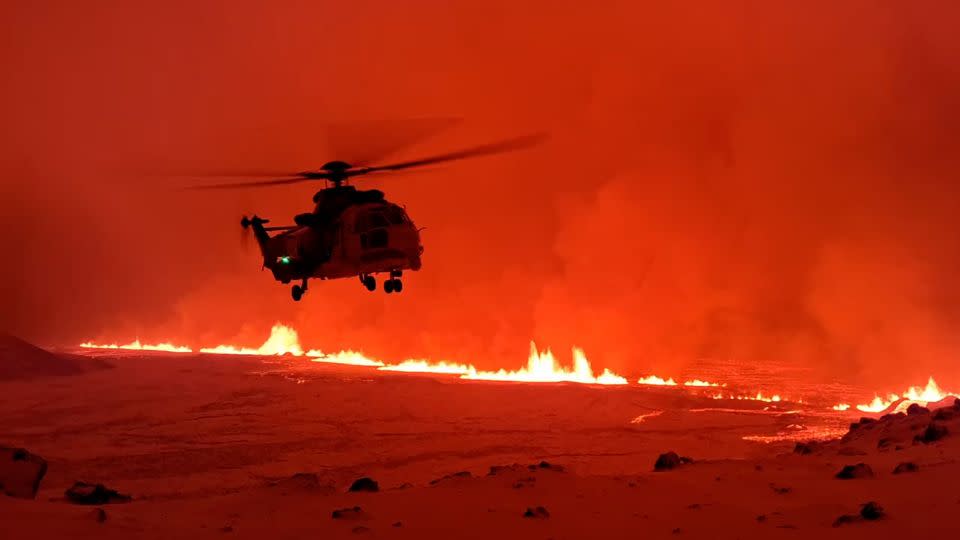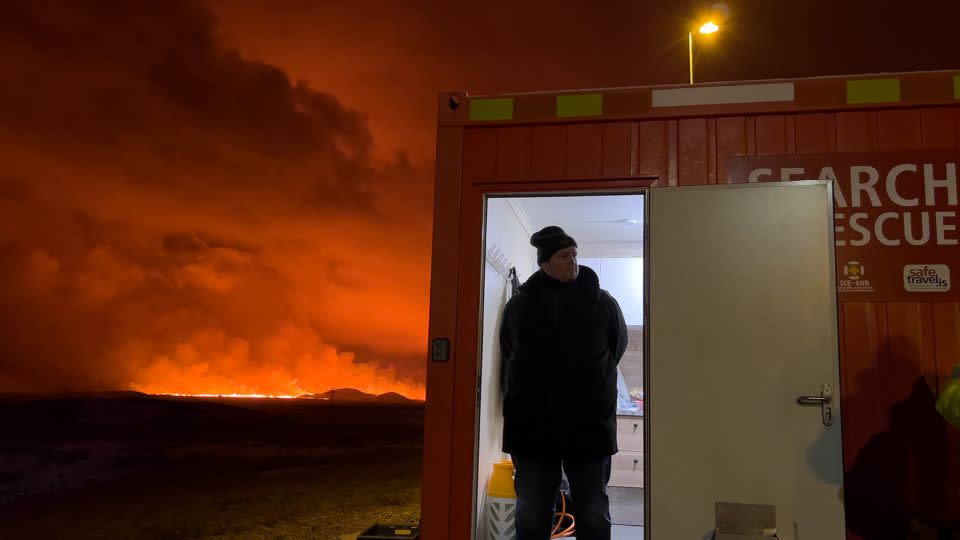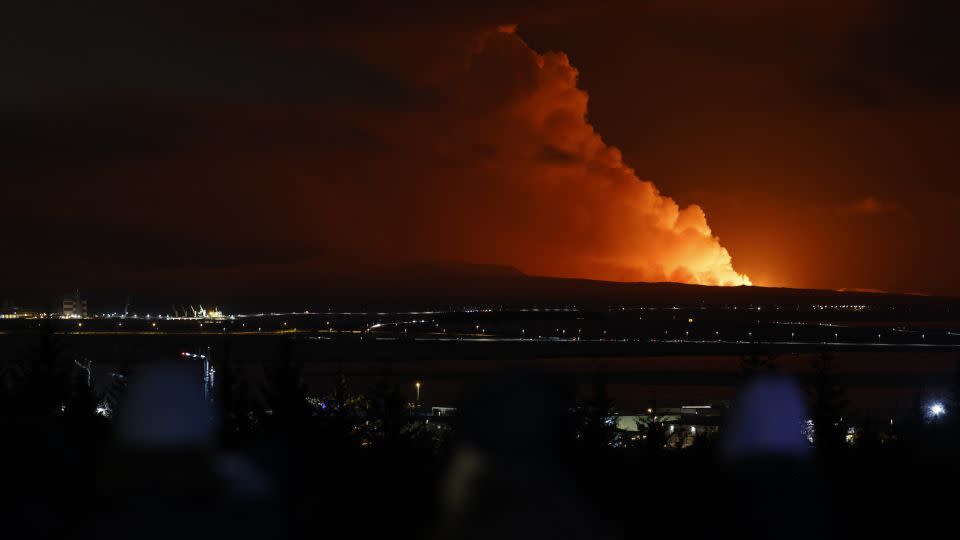A volcano dramatically erupted in Iceland on Monday, with spectacular bursts of lava and smoke illuminating the night sky after weeks of seismic activity prompted the evacuation of a nearby town.
The eruption on the Reykjanes peninsula began at around 10 p.m. local time, following an earthquake around an hour earlier, the Icelandic Meteorological Office said in a statement.
The office reported that the eruption was located close to Hagafell, about 3 kilometers (about 2 miles) north of the town of Grindavík.
Iceland’s Coast Guard posted a video on Facebook showing one of its helicopters at the scene, hovering over a long line of glowing lava spurting from the fissure in the ground. The air is shrouded by smoke and lit in glowing hues of orange and red.

In a statement Tuesday, Iceland’s government said the fissure opening is almost 4 kilometers long. It is the fourth eruption in the area since 2021 and the largest so far, the statement added.
Last month, an evacuation order was issued for Grindavík and nearby settlements preventing residents from staying in their homes overnight as the threat of a volcanic eruption loomed, public broadcaster RÚV reported.
The town of more than 3,000 people, which at one point risked being in the path of flowing lava, is now clear of residents, RÚV reported, citing police. It is a popular place for tourists because it lies some 7 kilometers from the famous Blue Lagoon geothermal spa.
The eruption does not pose a threat to life, Iceland’s government said in its statement. The area is closed to all traffic, it added, while strongly warning people not to approach the area.
While the eruption is not expected to impact populated areas or critical infrastructure in the coming days, and is no longer expected to reach Grindavík, it is releasing “considerable” toxic gases, said the Icelandic Tourist Board on Tuesday.
“People are strongly advised against visiting the site of the eruption while responders and scientists assess the situation,” the Tourist Board added.


There are currently no disruptions to flights to and from Iceland, and international flight corridors remain open, the government said.
It added that the eruption is classified as a fissure eruption, which does not usually result in large explosions or significant production of ash dispersed into the stratosphere.
In the first two hours of the eruption, hundreds of cubic meters of lava were being released per second, according to the Icelandic Meteorological Office. But the eruption’s intensity, and the level of seismic activity in the area, had decreased by early Tuesday, with lava spreading laterally from either side of the newly opened fissures.
The intense wave of hundreds of earthquakes last month prompted a national state of emergency after the country’s Civil Protection Agency said a magma tunnel was forming that could reach Grindavík.
“It is clear that we are dealing with events that we Icelanders have not experienced before, at least not since the eruption in Vestmannaeyjar,” the agency said, referencing a 1973 eruption that began without warning and destroyed 400 homes.


The Blue Lagoon, which draws tourists to its steaming water, had closed for a period last month after the initial signs of a potential eruption. It had just reopened to guests on Sunday – but said on Tuesday that it was temporarily closing again due to the eruption.
Authorities also said in November they were preparing a protective trench around a geothermal power plant about 7 kilometers from Grindavík that provides electricity and geothermal water to heat homes for a population of 30,000 on the peninsula.
Home to volcanoes
Iceland sits on a tectonic plate boundary that continually splits apart, pushing North America and Eurasia away from each other along the line of the Mid-Atlantic Ridge. It is home to 32 active volcanoes.
As such, the island nation is accustomed to volcanic eruptions, though they often occur in the wilderness, away from populated areas. The Bárðarbunga volcanic system situated in the center of the country erupted in 2014, producing lava that covered 84 square kilometers (32 square miles) of highland that didn’t damage any communities.
The Fagradalsfjall volcanic system erupted in 2021 for the first time in more than 6,000 years. It also didn’t threaten populated areas and even become a tourist attraction as people flocked to witness the eruption.
Experts don’t expect a volcanic eruption to cause the same level of chaos as that seen in 2010 when the Eyjafjallajökull volcano erupted, since it is unlikely to involve the glacial ice that led to a huge ash cloud.
About 100,000 flights were canceled, affecting 2 million people, as a result of the ash spewed out by the 2010 eruption, which threatened to stall aircraft engines and cause electrical failure.
“Eyjafjallajökull involved an eruption through or next to glacial ice that melted and provided water that made the eruption more explosive than it would otherwise have been, hence the high eruption plume and very wide ash dispersal,” Lionel Wilson, Emeritus Professor of Earth & Planetary Sciences at Lancaster University, told CNN last month.
This is a breaking news story and will be updated.
For more CNN news and newsletters create an account at CNN.com

Dr. Sarah Adams is a scientist and science communicator who makes complex topics accessible to all. Her articles explore breakthroughs in various scientific disciplines, from space exploration to cutting-edge research.






